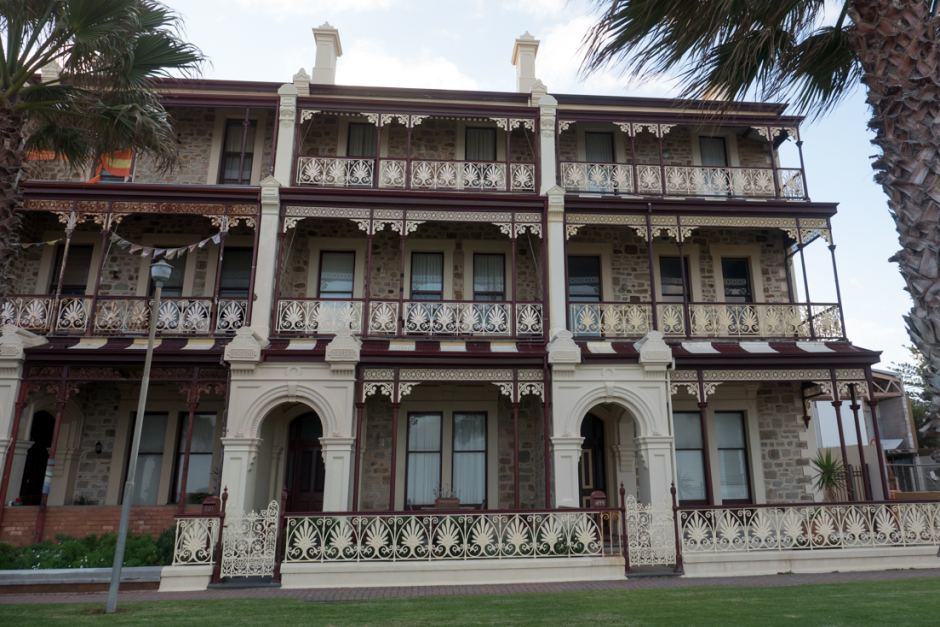891 ABC Adelaide By Brett Williamson Originally posted
Built in 1884, The Marine Terraces at Grange Beach are the only three-storey Victorian-styled terraces ever built on Australia’s coastline.
The block of eight are only one-third of what was originally planned for the site, with dreams of a 24-terrace site not eventuating.
Developers built the Grange Jetty, pub and terraces with a spur on the Port Adelaide rail line to help deliver Adelaide’s rich to their beachside residences.
But a financial downturn caused the area to fail and the developers were bankrupted just four years after The Marines’ completion.
Resident Dr Michael Henningsen bought one of these houses in 2006.
“The bottom levels were essentially the formal level for the family and the servants’ kitchen and the scullery,” he told 891 ABC Adelaide‘s Afternoons program.
“The first level was the principal bedrooms and the secondary bedrooms were on the top level.”
With his partner, Dr Henningsen has spent eight years renovating the building.
“When we bought the place it was fairly seriously derelict,” he said.
Dr Henningsen sought out heritage architect Dr Stephen Schrapel to help with the conversion of the heritage-listed home.
“They are a good example of the high Victorian period, with the large verandas and filigree ironwork,” Dr Schrapel said.
“It’s all very beautiful, but not well suited to the area that they were built in,” he added.
As part of the original structure, the ceiling heights are 13 feet (3.96m) at ground level, 12 feet on first, and 11 feet on the top floor.
The ceiling heights set the grandeur of the buildings for the time, but posed great challenges for residents, particularly when trying to heat such vast spaces.
In the same style as counter-weighted windows, the building has several counter-weighted half-length doors which lift to enable access to the verandas.
“The double-hung system was always designed as a ventilation method, so you could partially open the bottom and top so the cool air would come through the bottom and hot air exit the top,” Dr Schrapel said.
“This house has the most fantastic cross-ventilation,” Dr Henningsen added.
As it was originally built for Adelaide’s wealthy, the building had an intricate system of pulleys and bells to summon servants to the different rooms.
In honour of those who originally served their masters on the site, Dr Henningsen adapted a mechanism for their door bell.
The building originally had a series of five bells and pulleys, with all five bells terminating in the maid’s quarters at the rear of the second floor.
“We didn’t have the bells when we got here but we did have all of the mechanisms which we have kept,” Dr Henningsen said.
“One of my plans is to have that restored and have it put back up in the maid’s bedroom.”
Although the location is stunning, Dr Henningsen said it also presented challenges maintaining the property from sea spray and weather.
“You have to be vigilant on the maintenance on the painting and stuff.
“When they were built, because of their technology at the time — like the cast iron for the filigree balustrades — within 12 months they were rusting,” he said.
To protect the original feel of the frontage, Dr Henningsen said they had recasted the filigree in aluminium to avoid rust and degradation.







